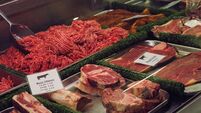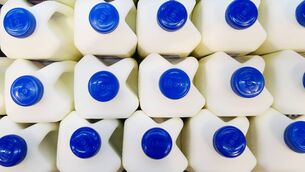Move fast to avail of spring slurry window
About half is applied in summer, mostly after first cut silage when it is most convenient to do so, but with a loss of very valuable N fertiliser.
A considerable amount of slurry is spread in autumn.
The reason for so little slurry being applied in spring is because of a very narrow window of opportunity.
Ground and weather conditions are often a problem.
Pre-grazing of silage areas and contamination of grass are also major constraints to spring slurry application with the traditional splash plate.
Ideally slurry should be spread between early grazing and closing for first cut silage. This will not only give optimum use of slurry, but also minimise disease risks.
The development of band spreading and the trailing shoe method of application (which separates the grass and applies the slurry in lines at the base of the sward) has overcome many of the constraints to spring slurry spreading.
Not only will these methods of slurry application avoid grass contamination; they also reduce odour emissions and losses of N to the air. They allow farmers to apply slurry later in silage swards.
Machinery for Spreading Slurry
By switching the application of 3,000 gallons per acre of cattle slurry from summer to spring, there is an economic gain of €15 per acre in terms of extra N.
By far the most popular machine for spreading farm slurry is the traditional vacuum splash plate tanker, costing about €15,000, and this situation is likely to continue. Most of these machines are now fitted with inverted splash plates for low trajectory spreading.
Low trajectory spreading significantly reduces air pollution, but it remains problematic in unsuitable weather and if the machine is not switched off quickly when the tank is almost empty.
In some populated areas, band spreading has been used for decades.
By regulation, a lot of pig slurry is spread by band spreader.
A band spreader attachment can be fitted to most vacuum tankers for a cost of about €7,000.
If a chopper is included, it will cost an extra €4,000.
The cost of a new 2,500 gallon trailing shoe unit is high, at about €35,000 to €40,000 — generally not on for individual farmers, but has a definite place for contractors or in partnerships.
A six-metre trailing hose machine is available.
The main problem with the original band spreading and the trailing shoe was that they slowed down spreading rate and were liable to blockages if the slurry contains lumps of silage or other foreign objects.
The modern machines contain inlet choppers and macerators which ensure even distribution.
The problem of blockages can be almost eliminated by taking the necessary precautions to avoid slurry contamination. The larger machines have spreading width of over seven metres, and spread as quickly as a splash plate tanker.
Umbilical System
The umbilical system of slurry spreading is very useful, especially on heavy land. The system lends itself to abuse in very wet conditions, but there is no reason why it can’t be an effective and environmentally friendly system, with good management. In fact, it provides the best opportunity to get slurry out in early spring on heavy land.
Perhaps the umbilical system’s association with heavy land usage has led to it not being used very often on dry land.
But it has great potential on all types of land, especially for contractors, costing about €45,000, including hoses. I understand the contractor charges are about €100 per hour plus VAT, but the output is extremely high at over 30,000 gallons per hour, compared with a splash plate output of 7,000 to 9,000 per hour.
The system has one tractor and operator in the yard pumping under very high pressure up to 2.4 km to a container on a tractor which is continuously spreading through a dribble bar of up to 12 metres in the fields.
The manufacturers claim three attractive advantages — very high output, lower spreading costs for the farmer, and less compaction of ground, because there is no heavy tanker.
These claims seems reasonable, with the emphasis on early spring application being so important.
Soil injection is very satisfactory for industrial waste in sensitive areas, but is generally too expensive for farming situations.













